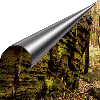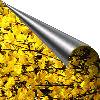

 | Bialowieski National Park |  |




 | Bialowieski National Park |  |


The European bison (Bison bonasus) is a symbol of the Park.
Bialowieski National Park is the oldest national park in Poland and one of the oldest in Europe. It was founded as "Reserve" Forestry in 1921 but officially established as National Park in Bialowieza in 1932. In 1947 it was restored as the Bialowieski National Park. At one time the property of Polish kings, the Bialowieskie Forests have survived in an almost unaltered form. It is without a doubt the most valuable, natural area in the lowlands of entire Europe. Located on the watershed of the Baltic and Black seas, this immense forest range consisting of evergreens and broad-leaved trees is the home of some remarkable animal life including rare and interesting mammals. Total area of the park, which was 5,348 ha, was nearly doubled in 1996 up to 10,472 ha. The Park comprises about one tenth of the entire Bialowieza Primeval Forest, which has a wide range of flora and fauna typical of both western and eastern Europe. The Bialowieskie Forests are among the World Biosphere Reserves in Poland. Since 1979, as the only Polish monument of nature, Bialowieski National Park has been inscribed on the World Heritage List.
Natural values
The Park lies within the Podlasie Lowland. The climate has many subboreal-continental features. For example, the first snowfall comes in the middle of October and some snow cover remains until the end of April.
Vegetation
The main feature of the Park is its forest. The Park protects a part (4,747 ha) of the last and one of the largest surviving areas of European primeval lowland mixed forest (pine, beech, oak, alder and spruce). The forest dates back to 8,000 BC and is the only remaining example of the original forests, which once covered much of Europe. One third of the Bialowieza is located in Poland with the remainder in Belarus, and the border area is marred by plowed strips and barbed-wire fencing.
Hornbeam-oak-lime forests of the Park, which also contain spruce, as well as spruce and linden forests, all boast majestic, 400 year old maple, elm and ash trees. Plant life here is extremely diverse (over 1,200 species) with many unique specimens including the exceptionally interesting mountain arnica (Arnica montana).
Fauna
The Park's animal life totals 11,000 species including 62 species of mammals and 200 species of birds. These wilderness areas are inhabited by some 300 European bison (a species which has been reintroduced into the park in 1929), elk, stag, roe deer, wild boar, lynx, wolf, fox, marten, badger, otter, ermine, beaver and numerous bats. It is also a show place reserve for tarpan (the Polish wild forest horse). Bird species include the black stork (Cioconia nigra), Pomeranian eagle (Aquila pomarina), tawny owl (Strix aluco), crane and raven.
Miscellanea
Bialowieza is an important scientific and educational center with a museum. The Bialowieska Glade, where a palace for the Tsar was built near the end of the 19th century (while this part of partitioned Poland did belong to the Russian Empire), is now the center of tourism in this area; it is equipped with a hotel, restaurant and parking areas. A tour of this Park is an excellent opportunity for the picture-taking tourist.



If you know any WWW sites that reference Polish National Parks please e-mail them to me.
Your input will be greatly appreciated.